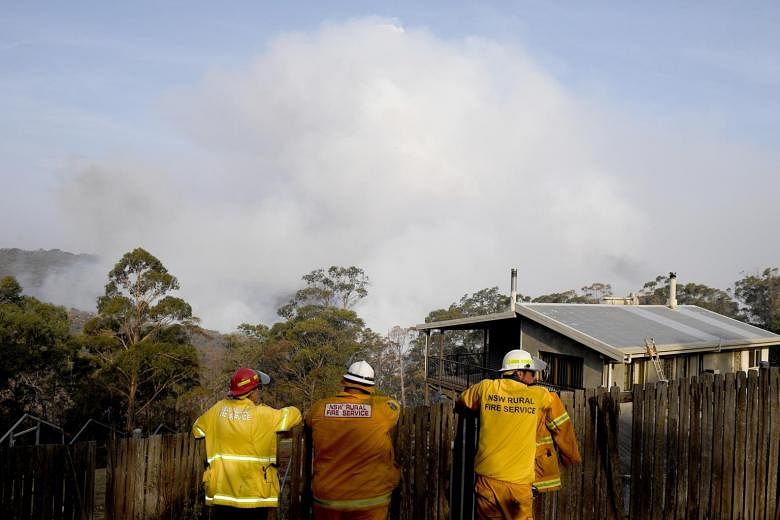MELBOURNE (REUTERS) - Severe storms are expected to bring some relief in the coming days from huge bush fires scorching Australia but the heavy downpours could also carry the risk of landslides and water pollution, officials said on Wednesday (Jan 15).
Australia is battling its worst bush fire season on record, with fires burning since September killing 29 people, destroying more than 2,500 homes and razing bushland across an area the size of Bulgaria.
The shift to more humid and wet weather later on Wednesday will likely help control some of the 114 blazes burning across New South Wales (NSW) and Victoria states and potentially even extinguish some, but will also bring new dangers.
"This is a day that we are quite concerned about," Mr Kevin Parkyn, a senior meteorologist with the Bureau of Meteorology, told reporters as he detailed a forecast of damaging winds, heavy rainfall and large hailstones for the city of Melbourne and its surrounds.
"Thunderstorms are a bit of a double-edged sword. While they can bring some much-needed rain, (the rain) can also come down in very fast, high quantities," he said.
Heavy downpours can pollute fresh water supplies as debris is swept into reservoirs. They can also cause flash flooding, leaving burnt-out areas of bush land particularly vulnerable to landslips and tree felling.
Melbourne, the capital of Victoria state, bore the brunt on Wednesday of smoke haze that satellites operated by US space agency Nasa scientists have tracked circumnavigating the globe.
Flights were cancelled as the heavy smoke pall shut down a runway at the city's airport. The start of qualifying matches for the Australian Open tournament, tennis' first Grand Slam of the year, was also delayed for the second day in a row.
Bush fires are common during Australia's summer months, but this fire season started unusually early, with blazes often moving quickly and unpredictably, and leaving swathes of the drought-stricken land scorched.

